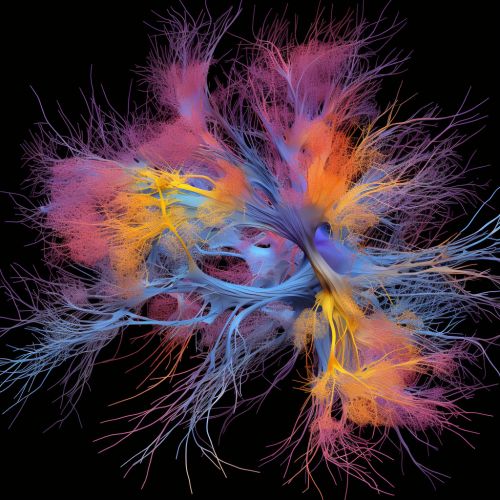Human Connectome Project
Overview
The Human Connectome Project (HCP) is a five-year project sponsored by sixteen components of the National Institutes of Health, split between two consortia of research institutions. The project was launched in July 2009 as the first of three Grand Challenges of the NIH's Blueprint for Neuroscience Research. The goal of the HCP is to build a "network map" that will shed light on the anatomical and functional connectivity within the healthy human brain, as well as to produce a body of data that will facilitate research into brain disorders such as dyslexia, autism, Alzheimer's disease, and schizophrenia.
Background
The term "connectome" refers to a comprehensive map of neural connections in the brain, and can be thought of as the brain's "wiring diagram". This complex network of neural pathways is crucial to understanding the functional organization of the brain, and the changes that occur in neurological and psychiatric disorders. The Human Connectome Project aims to provide an unparalleled compilation of neural data, an interface to graphically navigate this data and the opportunity to achieve never before realized conclusions about the living human brain.
Methodology
The HCP uses non-invasive imaging technologies to explore the human brain's connections. The primary imaging technologies used are Diffusion MRI and Functional MRI (fMRI). Diffusion MRI is used to identify white matter tracts in the brain, which are bundles of axons that connect different regions of the brain. Functional MRI, on the other hand, is used to identify regions of the brain that are activated when a person performs a certain task, or even at rest.


Data Acquisition
The HCP has collected data from over 1,200 healthy adults, including twin pairs and their non-twin siblings. This data includes high-resolution 3T MRI scans, along with supplemental 7T MRI scans and other data for a subset of subjects. The data collection also includes behavioral measures, demographic information, and a 7T diffusion dataset.
Data Analysis
The data collected by the HCP is processed and analyzed using a variety of computational tools. These tools are designed to handle the massive amounts of data generated by the project and to extract meaningful information about brain connectivity. The analysis includes the use of probabilistic tractography to map the white matter tracts, and functional connectivity analysis to identify networks of brain regions that are functionally connected.
Findings
The HCP has already yielded significant findings about the human brain. For example, it has provided detailed in-vivo measurements of the brain's connections, and has shown that these connections are highly correlated with a person's behavior. It has also revealed that there is a great deal of variability in brain connectivity between individuals, much of which can be attributed to genetic factors.
Impact
The Human Connectome Project has had a profound impact on neuroscience research. It has provided researchers with an unprecedented amount of data on the human brain, which has led to new insights into brain function and disease. The project has also spurred the development of new computational tools for analyzing brain data, and has set a new standard for open science, with all of its data freely available to the research community.
Future Directions
The HCP is not the end of connectome research, but rather the beginning. Future projects will build on the foundation laid by the HCP, mapping the brain's connections in even greater detail, and in different populations. These future projects will continue to enhance our understanding of the brain, and will likely lead to new treatments for neurological and psychiatric disorders.
